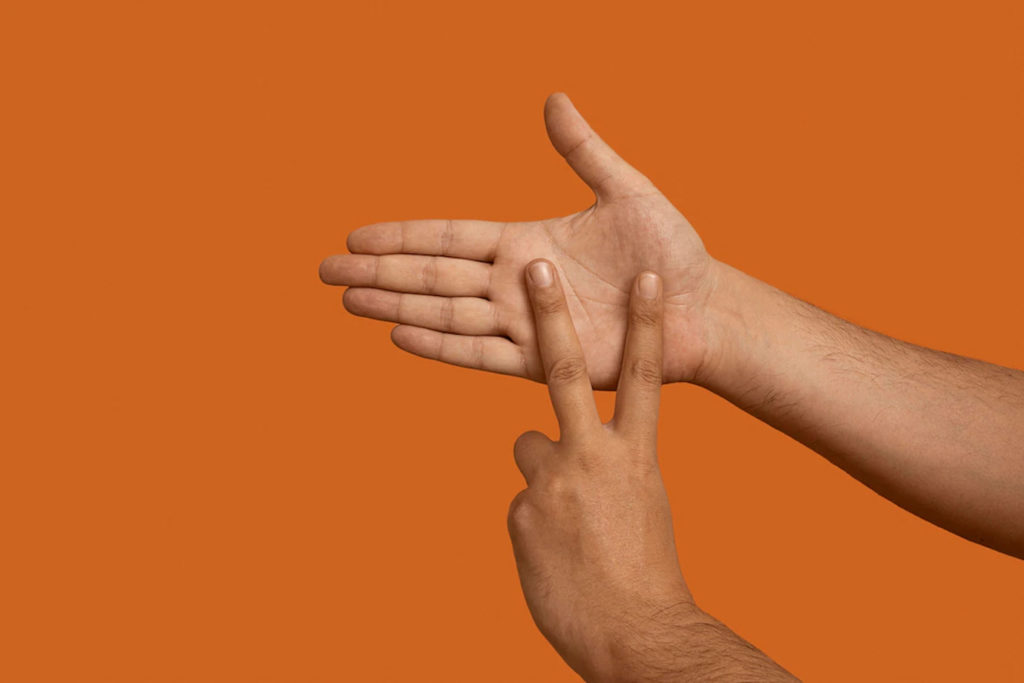In Queensland, there can be some confusion about the path for learning Auslan.
I hope to offer an unbiased (but not necessarily comprehensive) description here that will provide some clarity around how Auslan learning can look for people and suggest some options along the way.
I used to work for Deaf Connect (previously Deaf Services) for a number of years.
I know that some courses have changed since my time with them, but the information below is current to the best of my knowledge. (As anything new unfolds, I will endeavour to update this blog accordingly).
If you want to learn Australian Sign Language (Auslan) there are a few ways to approach this.
Auslan At Home (NDIS)
If you have an NDIS plan and communication/language acquisition is a goal, then a portion of your funding can help you/your family to access Auslan at Home programs (AAH). The biggest provider of this is Deaf Connect but this service is in high demand. It is my understanding that the waitlist is considerable (think months).
There are numerous independent Deaf businesses that offer this service and their availability might be more flexible. This generally looks like 1-2 hour sessions weekly or once a fortnight. The tutor will go through basic signs that you/your family will likely use and help you build your confidence with learning and using Auslan at home or via Zoom/Teams/FaceTime.
Auslan Basics
There are some online courses you may consider. As long as you can access reliable internet and a computer/laptop/phone, you can learn Auslan.
Awesome Auslan (me) offers an online beginners Auslan course. This course is self-paced and covers some aspects of Deaf culture and awareness, explicitly teaches some important linguistic features of Auslan and provides PDFs and activities to reinforce any learning. Access to this course is unlimited. All the videos have voice-over and subtitles included as required.
Lisa Mills also offers an online course with basic Auslan signs. This is a self-paced, simple course and Lisa speaks throughout (she is hard of hearing/Deaf herself). These signs are useful for basic understanding of Auslan. I believe there’s 12 months access. I understand she now offers an online course for children too. She also teaches British Sign Language (BSL).
Asphyxia provides some signs to learn on YouTube. These are free and clear and easy to understand. She is also an author and artist. (One of her books “Future Girl” has been flagged to be a TV series!!!) Check her out!
Alternatively, you can enrol in Introduction to Auslan offered by Deaf Connect. This is a community class that often runs for 8-weeks during school terms. These can be face-to-face or online at a set time with sessions run weekly for 2 to 2.5 hours. I believe there are two levels of Introduction to Auslan on offer at present.
These courses suit people who want to learn enough Auslan to communicate at a basic level with a Deaf person/Auslan user. This is not an accredited course. You may receive a certificate of participation. This is a good stepping stone to commence Certificate II – an accredited course.
Formal Auslan Education – Accredited Certificates & Diplomas
If you want to gain qualifications in Auslan, you have the option of starting Certificate II. To my knowledge, Deaf Connect is the only Registered Training Organisation in Queensland that offers this. (Southbank Brisbane TAFE used to offer an equivalent but a long time ago and they no longer offer this currently). The first few weeks often cover the same/similar signs/content covered in Introduction to Auslan. This course is a 6-month course – generally 4-5 hours per week. This course is currently heavily subsidised by the government on account that there is a national shortage of Auslan/English interpreters.
Once you complete Cert II, there’s Cert III (6-months) and Cert IV (6-months) then you have the option of going on to Diploma of Auslan (9-months) and/then Diploma of Interpreting (9-months). The standard for entry into the Diploma course is high, and interviews are conducted to decide if your skill level is sufficient to enter into these courses.
Formal Auslan Education – Becoming an Interpreter
If you go all the way to Diploma of Interpreting, the next step to becoming a qualified Auslan/English interpreter is to sit and pass the NAATI accreditation process. This means you become a fully qualified interpreter (there are currently 300-400 Australia-wide with an urgent need for more).
NOTE: To become fluent in any language, you can expect to dedicate at least 2-3 years to the language.https://www.gviusa.com/blog/smb-how-long-does-it-take-to-learn-a-language-fluently/#:~:text=A%20good%20rule%20of%20thumb,3%20years%20to%20the%20language.
Deaf Connects accredited courses, all up, are about 3 years. That is the formal learning. The key really is to immerse yourself in the local Deaf community, attend events, and learn and use the language informally when and wherever possible.
Hope you found this handy and keep up your Awesome Auslan!
Disclaimer This information is entirely subjective and based on my personal experience, interpretation and understanding of the subject matter.
If you want to get start with your journey into Auslan, we highly recommend starting with some beginner courses like the ones that we have on offer. Just click on the button below to find out more about our courses.

As a Deaf person who has used, loved, and continued to learn Auslan throughout my life, it was when I started studying the Diploma of Auslan (Deaf cohort 2018) that I was awestruck by how beautifully complex Auslan is.

